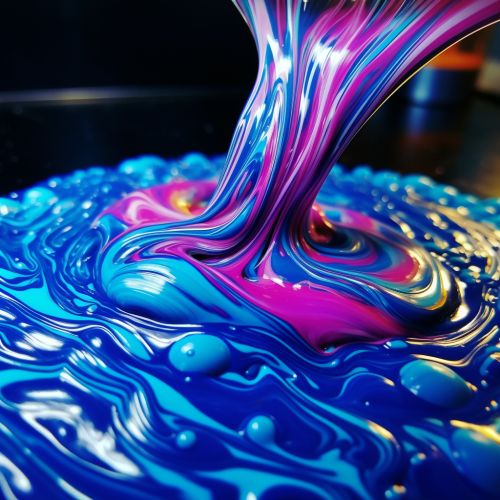Advances in Non-Newtonian Fluid Dynamics
Introduction
Non-Newtonian fluid dynamics refers to the study of fluids that do not follow Newton's law of viscosity. Unlike Newtonian fluids, the viscosity of non-Newtonian fluids is not constant and changes with the applied shear rate or shear stress. This article delves into the recent advances in the field of non-Newtonian fluid dynamics, exploring the latest research, models, and applications.


Classification of Non-Newtonian Fluids
Non-Newtonian fluids are broadly classified into four categories: time-independent, time-dependent, viscoelastic, and thixotropic fluids. Each category has unique characteristics and behavior under different conditions, which are explored in detail in this section.
Time-Independent Non-Newtonian Fluids
Time-independent non-Newtonian fluids exhibit a change in viscosity with a change in shear rate but do not depend on the duration of the shear. They are further divided into two types: shear-thinning (pseudoplastic) and shear-thickening (dilatant) fluids.
Shear-thinning fluids, such as ketchup and blood, become less viscous as the shear rate increases. On the other hand, shear-thickening fluids, like cornstarch in water, become more viscous with an increase in shear rate.
Time-Dependent Non-Newtonian Fluids
Time-dependent non-Newtonian fluids' viscosity changes with both the shear rate and the duration of the shear. They are further classified into thixotropic and rheopectic fluids.
Thixotropic fluids, like paints and gels, become less viscous over time under a constant shear rate. Rheopectic fluids, although rare, behave oppositely and become more viscous over time under a constant shear rate.
Viscoelastic Non-Newtonian Fluids
Viscoelastic fluids exhibit both viscous and elastic characteristics when subjected to deformation. Examples include polymer solutions and molten plastics. They can further be categorized into linear and nonlinear viscoelastic fluids.
Thixotropic Non-Newtonian Fluids
Thixotropic fluids are a subtype of time-dependent fluids that become less viscous over time when subjected to a constant shear rate. Their viscosity recovery when the shear is removed can be immediate or gradual.
Mathematical Models for Non-Newtonian Fluids
Several mathematical models have been developed to describe the flow behavior of non-Newtonian fluids. These models are crucial for predicting and controlling the flow of these fluids in various industrial processes.
Power-Law Model
The Power-Law model, also known as the Ostwald–de Waele model, is a simple model used to describe shear-thinning and shear-thickening fluids. It relates the shear stress to the shear rate through a power-law index.
Herschel-Bulkley Model
The Herschel-Bulkley model is a generalized model that incorporates a yield stress into the Power-Law model. It is used to describe fluids that exhibit a yield stress, such as toothpaste and mayonnaise.
Bingham Plastic Model
The Bingham Plastic model is used to describe fluids that behave as a rigid body at low shear stresses and flow as a Newtonian fluid at high shear stresses. It is used for fluids like drilling muds and sewage sludge.
Carreau-Yasuda Model
The Carreau-Yasuda model is a more complex model used to describe the viscosity behavior of polymer solutions over a wide range of shear rates.
Advances in Non-Newtonian Fluid Dynamics
The field of non-Newtonian fluid dynamics has seen significant advances in recent years. These advances span across various areas, including improved mathematical models, novel experimental techniques, and innovative applications.
Improved Mathematical Models
Recent research has led to the development of more accurate and comprehensive mathematical models for non-Newtonian fluids. These models incorporate more complex behaviors, such as viscoelasticity and thixotropy, and are capable of predicting the flow behavior of non-Newtonian fluids under a wider range of conditions.
Novel Experimental Techniques
Advancements in experimental techniques have enabled more precise measurements of non-Newtonian fluid properties. Techniques such as microfluidics and rheometry have allowed researchers to study these fluids at microscale levels and under varying conditions.
Innovative Applications
Non-Newtonian fluids have found innovative applications in various fields, including medicine, food processing, and materials science. For instance, in medicine, shear-thinning fluids are being used for targeted drug delivery. In food processing, understanding the rheological properties of non-Newtonian fluids like sauces and dressings is crucial for product development and quality control.
Conclusion
The field of non-Newtonian fluid dynamics continues to evolve, with ongoing research leading to improved understanding and control of these unique fluids. The advancements in this field have significant implications for various industries, promising more efficient processes and innovative products.
